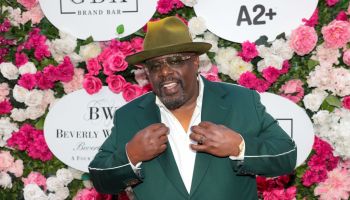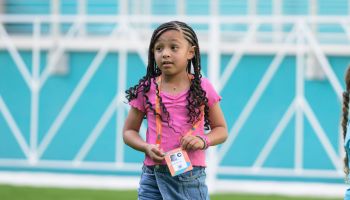In the fourth quarter of 2014, protesters took to the streets to stage demonstrations denouncing police violence, finding strength by invoking the names of those who perished by a law enforcement officer’s gun (or hands).
At least two of those names, Tamir Rice and John Crawford III, belonged to black individuals who were shot dead for holding guns. Fake guns. In one instance, a 12-year-old child was shot playing with a toy gun at a Cleveland park. Crawford, a 22-year-old black male, was gunned down after he picked up an airsoft rifle on display at an Ohio Walmart store.
In both cases, police maintain they told the child and young adult to put down the weapons. In both cases, surveillance video shows that the two were shot in a matter of seconds. For Tamir, that meant two seconds before his life ended, his 14-year-old sister looking on.
The conversation about state violence against black and brown people has had tremendous traction over the nation in the past few months, especially in cases like the two above that bring to light how said people are perceived by law enforcement. Why officers act so quickly. Why questions aren’t asked before an officer draws his gun.
And maybe we can credit those conversations for saving the life of a 13-year-old Maryland boy who was approached by an officer for carrying an airsoft AR-15 rifle and handgun while donning a ski-mask. Maybe his life was spared because he was white. Or maybe because the police officer had some sense and knew to assess the situation before resorting to bullets.
Whatever the case, the incident that occurred on New Year’s Eve is one that shouldn’t be shocking — cops confront teen with fake gun and boy lives — but it is. And that should say more about the state of this nation and the people sworn to protect it.
Take a look:
Officer Jason Shreves, a 10-year police veteran who spent five years on patrol in West Baltimore, was responding when he was flagged by a frantic woman in an SUV. Hurry, she said. There’s a man with a gun.
He turned a corner and saw someone dressed all in black and camouflage, carrying what looked like an AR-15 assault rife. He was wearing a ski mask and a holster with what looked like a hand gun in it.
“Drop the gun and get on the ground,” he shouted. He’d drawn his service weapon, a .40-caliber semi-automatic.
The suspect obeyed and was handcuffed.
But when the police officer took off the ski mask, he saw the frightened face of a 13-year-old boy. The teen had apparently been strutting around the neighborhood with all his Christmas stuff, an Airsoft rifle and an Airsoft pistol, both of which shoot plastic pellets.
And nobody died.
Shreves credits the fairytale ending to the boy’s response:
“He didn’t turn toward me. He didn’t come toward me. He didn’t raise the gun or point it at me. When I told him to drop the gun and get on the ground, he complied immediately,” said Officer Shreves.
“I didn’t feel like he was a threat to me or others.”
But afterward, he had to catch his breath.
“Every time you get something like this, nothing is the same. What would have caused me to take action? I was questioning myself.
“That ski mask comes off and I see this baby face.”
If only Tamir had a chance to respond.
And Shreves, aware of Tamir’s death, said race didn’t play a part in his decision to think before he took a shot (the officer is also white). Neither did the nice neighborhood. Shreves claims he would do the same thing in the “drug-infested rats’ nests” neighborhoods of Annapolis, Md.
“I am confident that I would have handled it the same way anywhere else,” he said. Why?
“Because I told him to drop the gun and get on the ground, and he complied.”
We think the families of Crawford and Tamir might disagree.
SOURCE: LA Times | PHOTO CREDIT: Getty

















